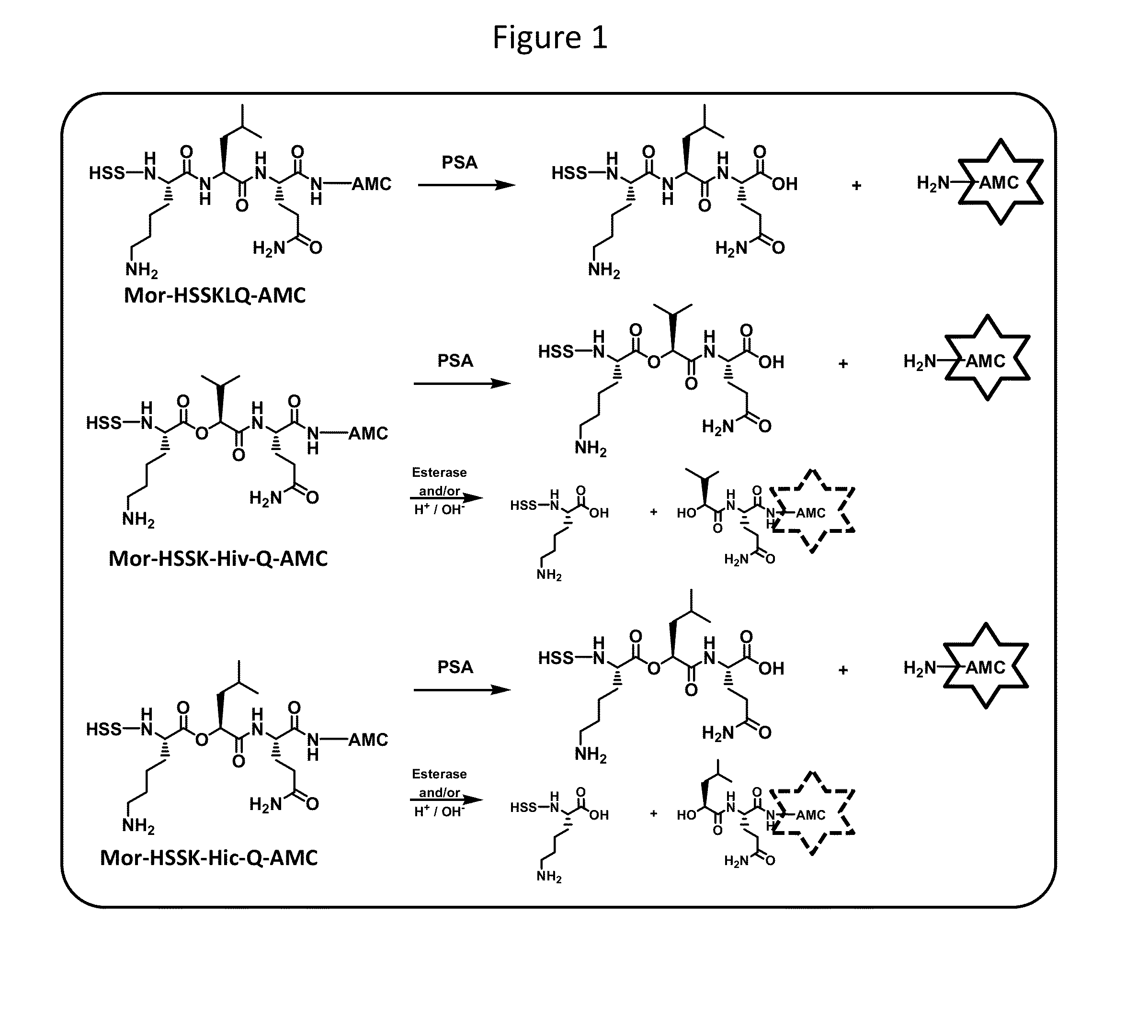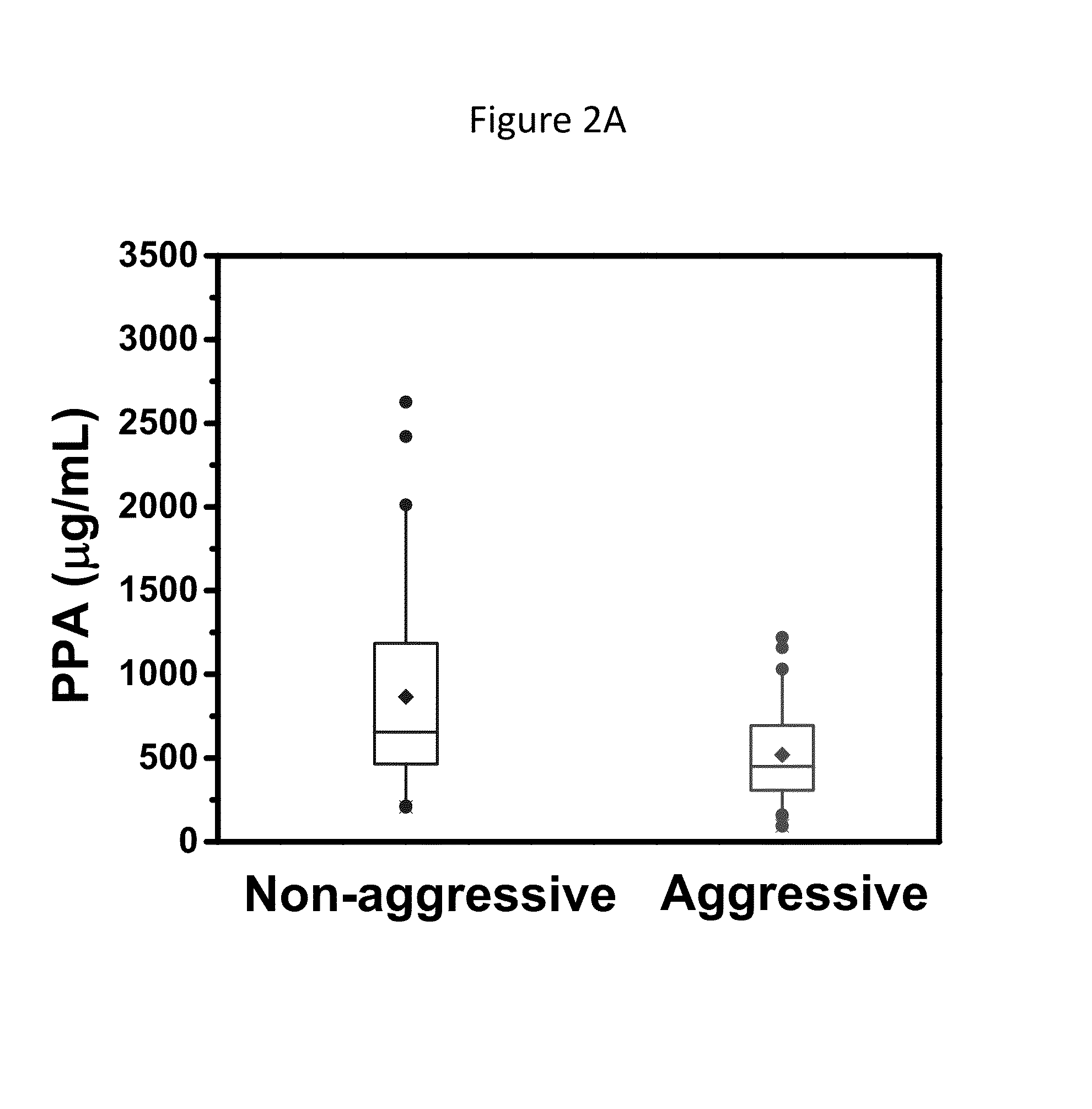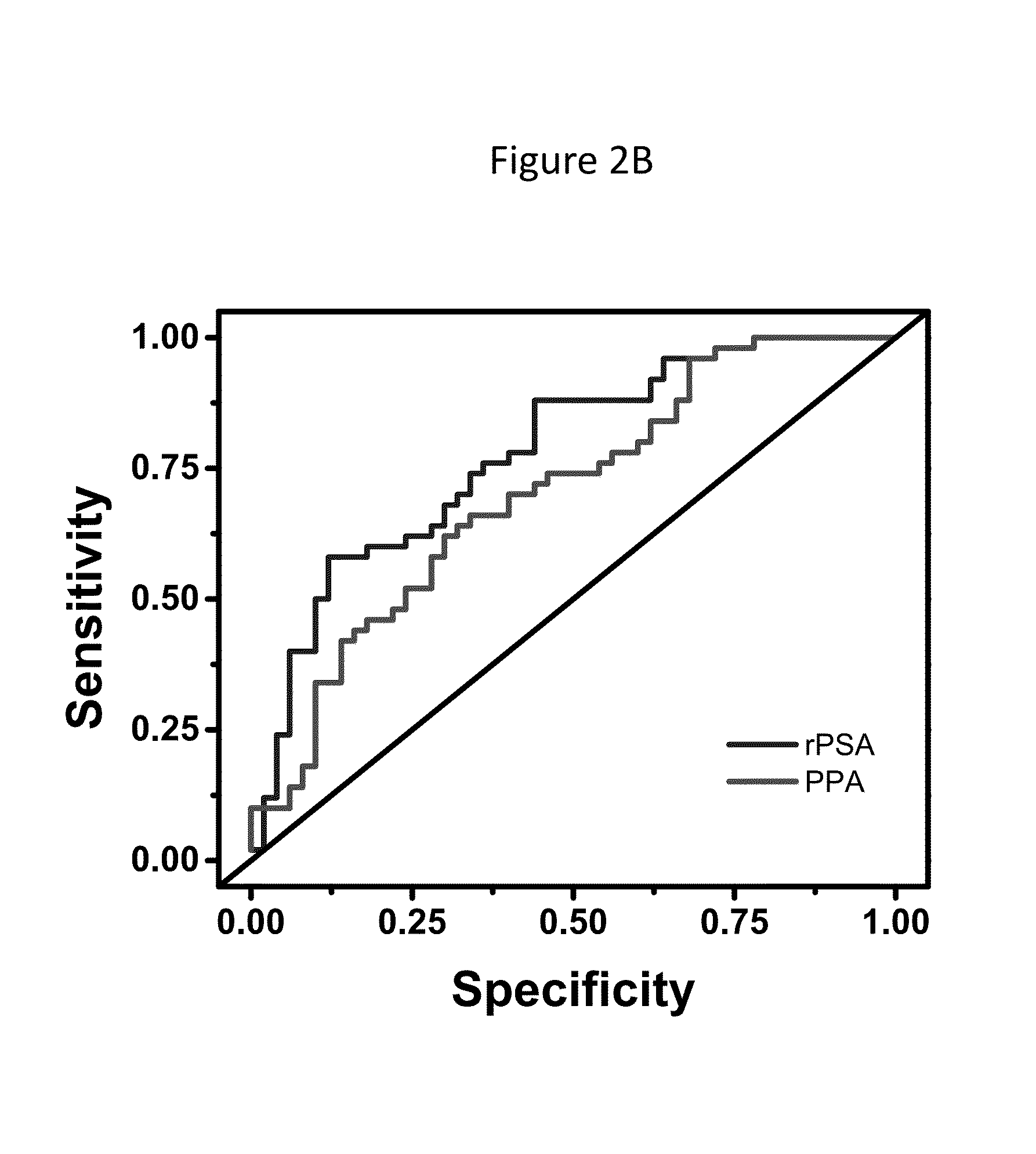Psa enzymatic activity: a new biomarker for assessing prostate cancer aggressiveness
a prostate cancer and enzymatic activity technology, applied in the field of psa enzymatic activity, can solve the problems of modest abnormality, significant limitation of the diagnostic specificity of this marker, and inability to differentiate men with indolent or organ-confined men, so as to increase the positive predictive value of psa testing and avoid undetectable cross-reactivity
- Summary
- Abstract
- Description
- Claims
- Application Information
AI Technical Summary
Benefits of technology
Problems solved by technology
Method used
Image
Examples
example 1
[0258]778 prostatic fluid samples were collected in the operating room from post-radical prostatectomy (PRP) specimens immediately after resection. Specimens were frozen at −80° C. Biochemical, clinical and surgical pathology information was obtained before and after surgery and recorded in an IRB-approved prospective research database. 50 samples from clinically aggressive and 50 from clinically non-aggressive cases were randomly selected for use in this unmatched case-control pilot study. Clinically aggressive prostate cancer was defined as cancer resulting in prostate cancer-specific death, lymph node or distant metastases, seminal vesicle invasion, or extracapsular tumor extension. Clinically non-aggressive prostate cancer was defined as cancer with Gleason score <6, pathology stage T2, and no evidence of clinical or biochemical tumor recurrence. By these definitions, 25.4% and 32.8% of subjects had clinically aggressive or non-aggressive prostate cancer respectively. The remain...
example 2
[0311]20 out 646 expressed prostatic fluid were obtained by the City of Hope Medical Center and were analyzed by measuring enzymatic activity levels of PSA and analyzed as described above in Example 2.A. The projected result was that patients diagnosed with aggressive prostate cancer would have low enzymatic activity levels of PSA and the inverse for patients with non-aggressive cancer. The 20 samples were correlated with many different variants. Classification of non-aggressive (NA), intermediate (INT), and aggressive (A) cancer was based on a prior study done by Ohmx (see Ahrens, M. J. et al. (2013) The Prostate DOI 10. 1002 / pros.22714) in accordance with NCCN guidelines (see “NCCN Guidelines for Patients®|Prostate Cancer.”National Comprehensive Cancer Network). The differences between clinical diagnosis and later pathological examinations seemed to have a trend of upgrading the severity of the cancers. The enzymatic activity levels of PSA were normalized with reference to PSA lev...
example 3
[0312]30 clinical urine samples were obtained from the Urological Research Foundation and analyzed as described above in Example 2.A. The de-identified urine samples were collected following a DRE prostatic massage from patients with elevated serum tPSA. The samples included 15 positive biopsy-confirmed prostate cancer patients with Gleason scores of 6 or greater and 15 negative patients with normal prostate biopsies but with BPH. Using the commercially obtained fluorogenic peptide HSSKLQ-AMC, the fluorescence cleavage assay was blindly performed as described previously. Denmeade et al. (1997) Can Res. 57:4924-4930. The results are shown in FIG. 6. The majority of negative control samples showed minimal PSA activity, in contrast to the high median PSA activity levels from the cancer-confirmed group, which is total opposite to the results for serum t-PSA levels. An extended statistical analysis was done to assert whether there are other values that can contribute to this activity.
[03...
PUM
| Property | Measurement | Unit |
|---|---|---|
| temperature | aaaaa | aaaaa |
| volume | aaaaa | aaaaa |
| electrochemical | aaaaa | aaaaa |
Abstract
Description
Claims
Application Information
 Login to View More
Login to View More - R&D
- Intellectual Property
- Life Sciences
- Materials
- Tech Scout
- Unparalleled Data Quality
- Higher Quality Content
- 60% Fewer Hallucinations
Browse by: Latest US Patents, China's latest patents, Technical Efficacy Thesaurus, Application Domain, Technology Topic, Popular Technical Reports.
© 2025 PatSnap. All rights reserved.Legal|Privacy policy|Modern Slavery Act Transparency Statement|Sitemap|About US| Contact US: help@patsnap.com



